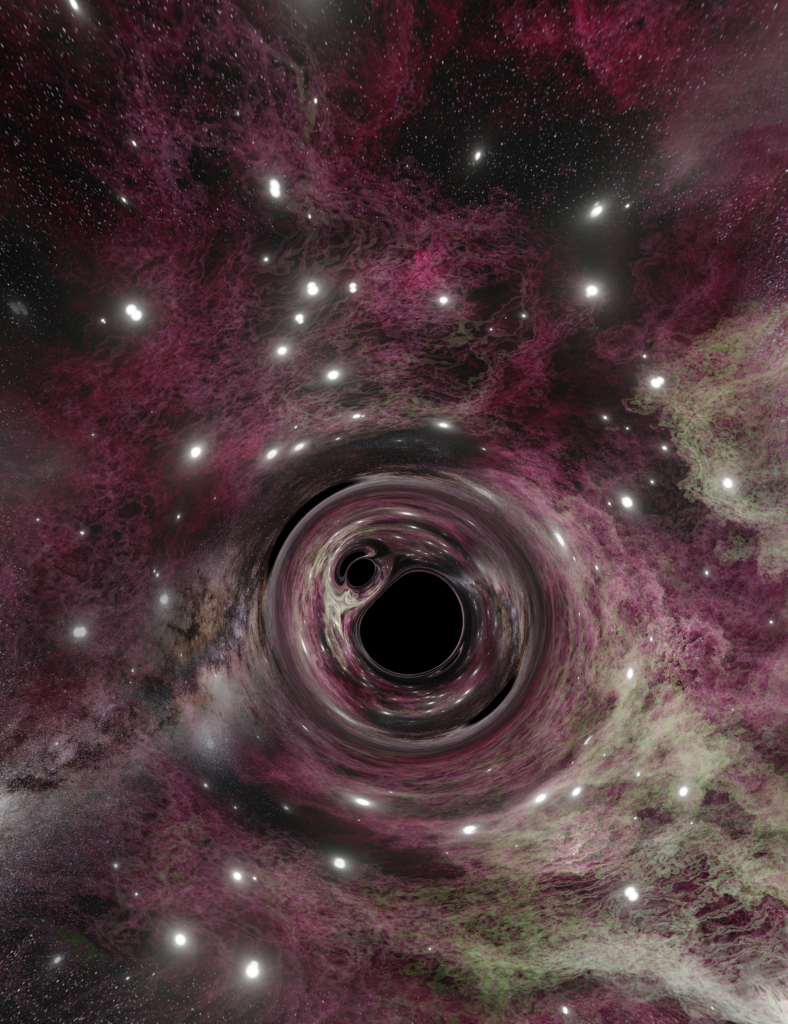A 31.5 solar-mass black hole with an 8.38 solar-mass black hole companion viewed in front of its (computer generated) stellar nursery prior to merging. The distant band of the Milky Way can be seen toward the lower-left of the black hole pair. Light is warped nearby the black holes due to their strong gravity.
The existence of merges such as these are being predicted using the POSYDON (POpulation SYnthesis with Detailed binary-evolution simulatiONs) code’s recent major advancements in simulating binary-star populations to provide new insights into the formation mechanisms of merging black holes in galaxies like our own. The team behind this work includes Northwestern’s Vicky Kalogera, was led by the University of Geneva, and included scientists from the University of Florida and other institutions.
The results were published on June 29, 2023 in the journal Nature Astronomy. The study was the first to utilize the newly released open-source POSYDON software to investigate merging binary black holes.
Read the full Northwestern News story.

Credit: Aaron M. Geller / Northwestern CIERA & NUIT-RCS; ESO / S. Brunier
- Science,
- Interdisciplinary,
- Data Science & Computing

